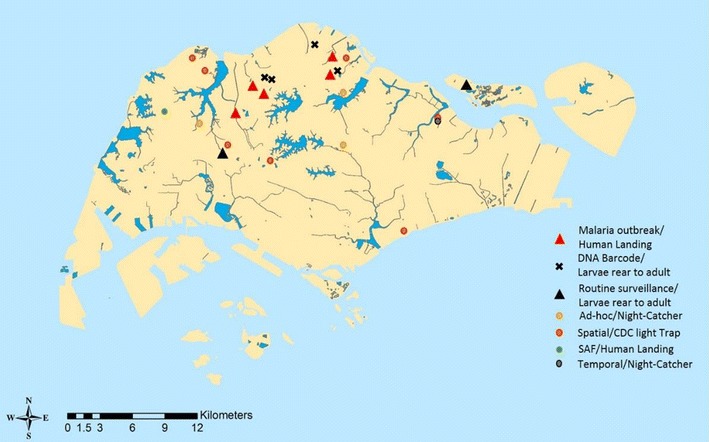Fig. 1.

Spatial distribution of Anopheles sinensis collected from 13 locations throughout Singapore for determining the taxonomic forms of Singapore’s An. sinensis. Additionally, sequences of samples from four locations labelled “x” and five locations labelled as “∆” were extracted from Genbank as references. Note: Spatial/CDC light trap: Spatial distribution study conducted in 2013 using CDC light trap; Singapore Armed Forces/Human Landing: Mosquitoes collected from Singapore Military training grounds via Human Landing method; Ad hoc/Night-Catcher: Mosquitoes collected due to feedback on high Anopheles adult population using Night-Catcher; Temporal/Night-Catcher: An. sinensis collected from a 2 years temporal study using Night-Catcher; Routine surveillance/Larvae reared to adult: Larvae collected through routine surveillance were sent into EHI lab for identification and were reared to adult stage; DNA barcode/larvae reared to adult stage: Anopheles sinensis larvae were collected for DNA barcode project (DNA sequences were retrieved from Genbank and were used as reference in our current taxonomic study [32]); Malaria outbreaks/Human Landing: Adult An. sinensis were collected during 2009 malaria outbreak via Human Landing (DNA sequences were retrieved from Genbank for our current study [8])
